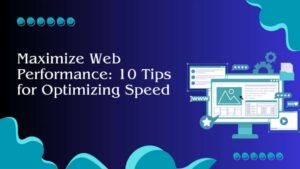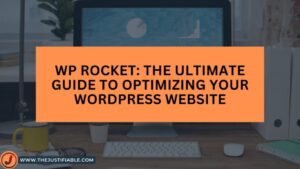Table of Contents
Are you struggling to make your blog posts stand out in search results? Wondering how to craft an SEO friendly blog that not only ranks high but also engages readers?
In this article, we’ll explore the best tips to create a strong SEO friendly blog post that drives traffic and boosts your online presence.
1. Unlocking The Secrets To A Successful SEO Friendly Blog
Creating a successful SEO friendly blog is all about balancing quality content with strategic optimization. The right approach can significantly boost your blog’s visibility and attract a loyal audience. A strong SEO strategy ensures that your blog not only ranks high on search engines but also resonates with your readers, offering real value.
To achieve this, understanding the fundamentals of SEO is crucial. This includes keyword research, crafting engaging titles, and optimizing meta descriptions. Each of these elements plays a vital role in enhancing your blog’s performance and ensuring that it reaches its full potential. Let’s dive into these key aspects to unlock the secrets to a successful SEO friendly blog.
SEO Services Recommendations
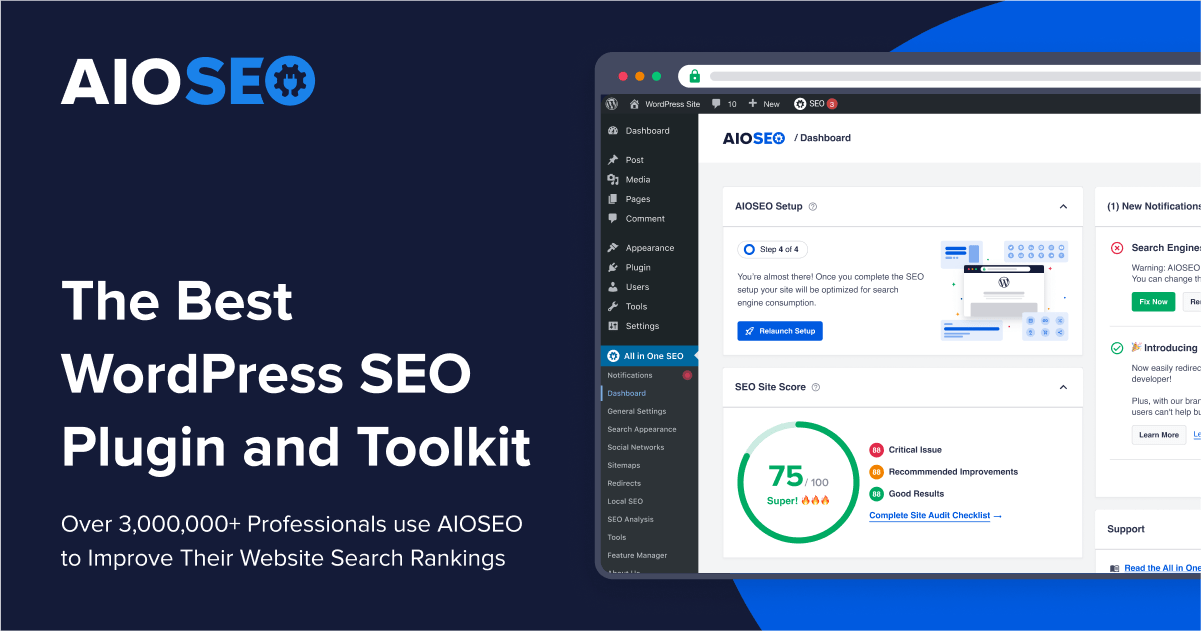 AIOSEO
| 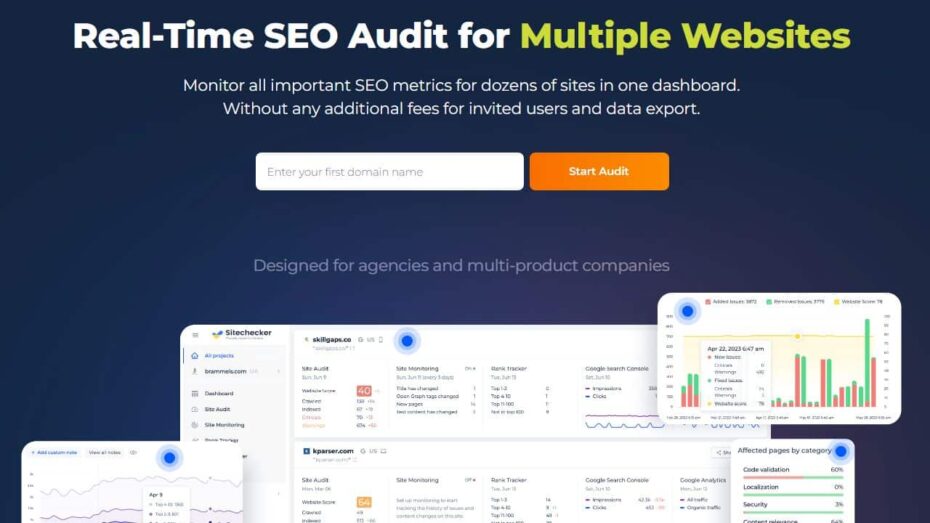 Sitechecker
| 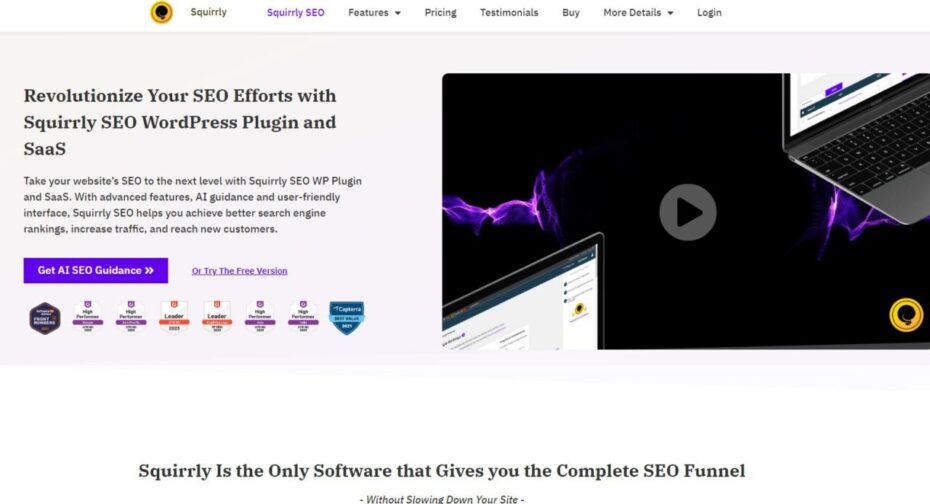 Squirrly
|
Understanding The Importance Of Keyword Research
Keyword research is the foundation of any SEO friendly blog. It helps you identify the terms your audience is searching for, allowing you to tailor your content accordingly. By understanding the specific keywords that resonate with your target audience, you can create content that directly addresses their needs, increasing your blog’s relevance and authority.
Effective keyword research goes beyond simply finding popular terms. It involves analyzing search intent, competition, and long-tail keywords. This comprehensive approach ensures that you’re not just attracting visitors but engaging them with content that meets their expectations. Implementing the right keywords naturally throughout your content can drive organic traffic and improve your blog’s ranking.
To begin with, use tools like Google Keyword Planner or Semrush to identify high-volume keywords relevant to your niche. Focus on keywords that align with your blog’s goals and audience. Incorporating these keywords into your titles, headings, and content can significantly enhance your blog’s SEO performance, making it easier for search engines to index your site.
Once you’ve identified your primary and related keywords, strategically place them in your content. However, avoid overloading your blog with keywords. Instead, ensure they fit seamlessly into your writing, maintaining a natural flow. This approach helps in providing a better user experience while keeping search engines satisfied.
Lastly, regularly revisit your keyword strategy to stay updated with changing trends and search behaviors. This continuous refinement ensures that your SEO friendly blog remains relevant and competitive over time, consistently driving traffic and engagement.
Crafting Compelling Titles That Capture Attention
Your blog’s title is the first thing readers notice, making it a crucial element of your SEO strategy. A compelling title not only grabs attention but also incorporates your primary keyword, making it easier for search engines to understand and rank your content. Crafting the right title requires a mix of creativity and strategic keyword placement.
Start with a clear and concise title that reflects the core message of your blog. Use power words to evoke curiosity or urgency, encouraging readers to click. Incorporate your primary keyword naturally, ensuring it fits seamlessly into the title without feeling forced. This balance helps in attracting both search engines and readers alike.
For example, if your blog is about “SEO friendly blog tips,” a title like “Master The Art Of Creating An SEO Friendly Blog” could be effective. It highlights the primary keyword while promising valuable insights, making it appealing to potential readers. Remember, a strong title is your first opportunity to make a great impression, so make it count.
Once you’ve crafted your title, consider testing different variations to see what resonates best with your audience. A/B testing can provide valuable insights into what works, allowing you to refine your approach over time. Continuously optimizing your titles ensures that your blog remains competitive and engaging, driving more traffic to your site.
Finally, ensure your title is supported by high-quality content that delivers on its promise. A compelling title might attract clicks, but it’s the value of your content that will keep readers engaged and coming back for more. This holistic approach to title crafting and content creation is key to building a successful SEO friendly blog.
Utilizing Meta Descriptions To Boost Click-Through Rates
Meta descriptions are a powerful tool in your SEO arsenal. These short snippets of text appear under your blog’s title in search results, offering a brief overview of your content. A well-crafted meta description can significantly boost your click-through rates by enticing users to click on your link instead of others.
When writing a meta description, focus on summarizing the main point of your blog in a concise and engaging way. Use action-oriented language and include your primary keyword naturally. This approach not only appeals to search engines but also makes your content more attractive to potential readers.
For instance, if your blog post is about “SEO friendly blog strategies,” a meta description like “Discover essential tips to create a powerful SEO friendly blog that ranks higher and drives traffic” could work well. It incorporates the primary keyword while offering a clear value proposition, encouraging users to click.
Additionally, keep your meta description within the recommended 150-160 characters to ensure it displays fully in search results. This concise format is crucial for capturing attention quickly, especially on mobile devices where space is limited. A well-optimized meta description can be the difference between a click and a missed opportunity.
Finally, don’t overlook the importance of testing and refining your meta descriptions. Regularly review your performance metrics to identify which descriptions are driving the most traffic. This data-driven approach allows you to continually improve your SEO strategy, ensuring your blog remains effective and competitive in the search results.
2. Mastering Content Structure For Maximum SEO Impact
A well-organized blog post is crucial for both reader engagement and SEO success. A strong content structure not only enhances readability but also makes it easier for search engines to crawl and index your content. By mastering the organization of your blog posts, you can significantly boost your SEO friendly blog’s performance.
Start by ensuring that your content is logically structured, with clear headings and subheadings. This helps guide your readers through the content smoothly while signaling to search engines what each section is about. A well-structured blog post improves user experience and can lead to higher search engine rankings.
Organizing Your Blog Post With Clear Headings And Subheadings
Clear headings and subheadings are the backbone of an effective content structure. They break down your blog into digestible sections, making it easier for readers to follow and find the information they need. This organization also enhances your SEO friendly blog by helping search engines understand the hierarchy and relevance of your content.
To create impactful headings, use your primary keyword naturally and ensure that each heading clearly reflects the content of the section. Avoid vague or overly broad headings; instead, aim for specific and descriptive titles that add value. Well-crafted headings can also improve your click-through rates from search results.
When writing subheadings, think about the flow of information. Subheadings should logically follow one another, creating a seamless narrative. This not only keeps readers engaged but also makes your content more accessible. By organizing your blog effectively, you create a positive experience for both users and search engines.
In addition, consider using different heading levels (H2, H3, etc.) to show the relationship between sections. This hierarchical structure helps search engines understand which parts of your content are most important, potentially boosting your rankings. Remember, clear and well-organized content is key to mastering SEO.
Lastly, use headings to highlight the main points of your blog post. Readers often skim content, and well-placed headings allow them to quickly find what they’re looking for. This improves user satisfaction and can lead to longer time spent on your page, which is a positive signal for SEO.
The Role Of Internal Links In SEO Optimization
Internal links are an essential part of a successful SEO strategy. They connect different parts of your blog, helping readers navigate your content while signaling to search engines the importance of specific pages. By strategically placing internal links, you can enhance the SEO performance of your blog.
Start by identifying key pages on your blog that you want to boost. These might include cornerstone content or pages that target important keywords. Linking to these pages from within your blog posts can distribute link equity, helping those pages rank higher in search results. This strategy also keeps readers on your site longer.
When adding internal links, use descriptive anchor text that naturally fits within your content. Avoid generic phrases like “click here” and instead use keywords that describe the linked page. This not only improves the user experience but also helps search engines understand the context of the linked content.
Additionally, internal links can help reduce your bounce rate. By guiding readers to related content, you keep them engaged and encourage them to explore more of your blog. This increased engagement is beneficial for SEO, as it signals to search engines that your content is valuable and relevant.
Lastly, review and update your internal links regularly. As you create new content, link back to older posts that are still relevant. This ongoing process keeps your content interconnected and ensures that all parts of your blog benefit from internal linking, contributing to your overall SEO strategy.
Enhancing Readability With Short Paragraphs And Bullet Points
Readability is a crucial factor in keeping readers engaged and improving your blog’s SEO performance. Short paragraphs and bullet points make your content easier to scan, helping readers quickly find the information they need. This user-friendly format can lead to higher engagement and better search engine rankings.
Start by breaking up your content into small, manageable chunks. Each paragraph should focus on a single idea, making it easy for readers to follow your argument. Short paragraphs also reduce the visual overwhelm that can occur with large blocks of text, encouraging readers to stay on the page longer.
Bullet points are another effective tool for enhancing readability. Use them to highlight key points or lists, allowing readers to absorb information quickly. Bullet points make complex information more accessible, which can improve comprehension and retention. This, in turn, enhances the overall user experience.
Incorporate bullet points naturally into your content. They should complement your text, not disrupt the flow. Use them sparingly and strategically to emphasize important details or steps in a process. By doing so, you make your blog more reader-friendly, which can lead to increased engagement and better SEO performance.
Finally, consider using bold or italic text to highlight key phrases within your paragraphs. This subtle emphasis draws attention to important concepts without overwhelming the reader. When combined with short paragraphs and bullet points, these formatting techniques create a visually appealing and highly readable blog post.
3. The Power Of High-Quality Content For SEO Success
High-quality content is the cornerstone of any successful SEO strategy. Content that provides genuine value to readers not only builds trust but also encourages sharing and engagement, all of which are positive signals for search engines. By focusing on creating valuable content, you can significantly enhance your blog’s SEO performance.

To achieve this, start by understanding your audience’s needs and preferences. High-quality content should solve problems, answer questions, or provide insights that are relevant to your readers. When your content meets these criteria, it naturally attracts more traffic and encourages repeat visits.
Creating Valuable Content That Solves Reader Problems
Valuable content is content that addresses the specific problems or questions your readers have. This type of content resonates with your audience because it offers practical solutions or insights that they can apply. By focusing on solving reader problems, you can build a loyal following and enhance your blog’s SEO.
To create this type of content, start by researching your audience’s pain points. Use tools like social media, forums, or keyword research to identify common questions or challenges in your niche. Then, develop content that directly addresses these issues, offering actionable advice or detailed explanations.
When writing, ensure that your content is clear, concise, and easy to understand. Avoid jargon or overly complex language, as this can alienate readers. Instead, focus on delivering information in a straightforward and relatable way. The more accessible your content, the more likely it is to be shared and referenced.
Additionally, consider incorporating real-world examples or case studies to illustrate your points. These examples can make your content more relatable and help readers see how they can apply the information to their own situations. This practical approach not only enhances the value of your content but also strengthens your connection with your audience.
Finally, regularly update your content to keep it relevant. As trends and information evolve, your content should reflect these changes. This ongoing effort ensures that your blog remains a valuable resource for readers, which can lead to sustained traffic and improved SEO over time.
Incorporating Primary And Related Keywords Naturally
Incorporating primary and related keywords into your content is essential for SEO, but it must be done naturally. Keywords should enhance your content, not disrupt the flow or readability. When used effectively, they help search engines understand the context of your blog, improving your chances of ranking well in search results.
Start by identifying your primary keyword and a few related keywords. These should align with the main topics and subtopics of your blog post. Once you have your keywords, integrate them into your content naturally, ensuring they fit within the context of your writing without feeling forced.
For example, if your primary keyword is “SEO friendly blog,” you might use it in your introduction, headings, and a few strategic places throughout the content. Related keywords can be sprinkled in where relevant, such as in subheadings or within paragraphs. The goal is to make your content feel organic while still optimizing it for search engines.
Avoid the temptation to overuse keywords. Keyword stuffing can harm your SEO efforts and make your content less enjoyable for readers. Instead, focus on creating high-quality content that naturally incorporates keywords in a way that enhances the overall message. This approach not only improves your SEO but also keeps your audience engaged.
Finally, regularly review your content to ensure that your keyword usage remains effective. As search algorithms evolve, the importance of natural keyword integration will likely increase. By staying attuned to these changes and adapting your strategy, you can maintain a strong SEO friendly blog that continues to attract and engage readers.
Avoiding Keyword Stuffing While Maintaining Relevance
Keyword stuffing can severely damage your blog’s SEO and reader experience. Overloading your content with keywords disrupts the flow and makes it feel unnatural, leading to lower engagement and potential penalties from search engines. To avoid this, focus on maintaining relevance while using keywords strategically.
Begin by setting a clear focus for each blog post. Your primary keyword should align with the main topic, and any related keywords should complement it. Use these keywords in a way that supports the overall message of your content, rather than forcing them into places where they don’t fit naturally.
One effective strategy is to use synonyms or related phrases. This approach allows you to vary your language while still targeting the same concepts. For example, instead of repeatedly using “SEO friendly blog,” you might also use terms like “SEO optimized blog” or “search engine friendly content.” This keeps your writing fresh and engaging.
Additionally, prioritize the quality of your content over the quantity of keywords. Readers are more likely to engage with and share content that provides real value, regardless of how many times a keyword appears. By focusing on delivering meaningful insights and solutions, you can naturally attract traffic without relying on keyword stuffing.
Finally, review your content before publishing to ensure that your keyword usage is balanced and appropriate. If a keyword appears too frequently or disrupts the flow, consider rephrasing or removing it. This careful attention to detail will help you maintain a strong SEO presence while delivering content that resonates with your audience.
4. Optimizing Images And Media For A SEO Friendly Blog
Optimizing images and media is essential for creating an SEO friendly blog. Properly optimized visuals not only improve user experience but also enhance your blog’s visibility in search results. By focusing on the right techniques, you can ensure that your images and media contribute to your blog’s overall SEO success.
To achieve this, it’s important to use alt text effectively, compress images without compromising quality, and leverage video content strategically. These steps help search engines understand and rank your media, making your blog more accessible and attractive to both users and search engines.
How To Use Alt Text Effectively For SEO
Alt text is a crucial element in optimizing images for SEO. It provides a textual description of your images, helping search engines understand their content. When used effectively, alt text can improve your blog’s visibility in image search results, driving additional traffic to your site. It also enhances accessibility for users with visual impairments.
To create effective alt text, focus on describing the image accurately while naturally incorporating your primary keyword where relevant. Avoid keyword stuffing; instead, aim for a concise and descriptive explanation that adds value. For example, if your image is of a “SEO friendly blog layout,” your alt text could be “example of a SEO friendly blog layout with optimized headings and content.”
Keep your alt text short, ideally under 125 characters, to ensure it displays fully across different platforms. This brevity also helps in maintaining a clean and user-friendly presentation of your blog. Regularly review and update your alt text to keep it relevant and aligned with your blog’s SEO strategy.
Additionally, consider the context of the image when writing alt text. The description should make sense within the flow of your content, enhancing the reader’s understanding. This thoughtful approach not only improves SEO but also enriches the overall user experience, making your blog more engaging and informative.
Compressing Images Without Losing Quality
Image compression is vital for maintaining fast loading times on your blog, which directly impacts SEO. Large image files can slow down your site, leading to higher bounce rates and lower search rankings. Compressing images reduces their file size without sacrificing quality, ensuring a smooth and speedy user experience.
Start by using image compression tools like TinyPNG or ImageOptim. These tools allow you to reduce file sizes while preserving visual integrity. It’s important to strike a balance between compression and quality; overly compressed images can appear pixelated, which may detract from the professional look of your blog.
When saving images for your blog, choose the appropriate file format. JPEG is generally best for photographs, while PNG is ideal for images with transparency or sharp edges. Selecting the right format ensures that your images look crisp and load quickly, contributing to a more SEO friendly blog.
Regularly audit your blog’s images to identify opportunities for compression. Updating older posts with compressed images can improve your site’s overall performance, leading to better search engine rankings. This ongoing optimization is key to maintaining a fast and efficient blog that keeps readers engaged.
Finally, remember that image optimization is not a one-time task. As you add new content, continue to compress and optimize images to keep your blog running smoothly. This proactive approach helps ensure that your blog remains both user-friendly and SEO optimized over time.
Leveraging Video Content To Enhance SEO Performance
Video content is a powerful tool for boosting SEO and engaging readers. Videos can keep visitors on your site longer, reducing bounce rates and improving your blog’s search engine rankings. Additionally, properly optimized video content can appear in video search results, driving more traffic to your blog.
Start by embedding relevant videos that complement your blog content. These could be tutorials, interviews, or explainer videos that provide additional value to your readers. Ensure that your videos are hosted on a fast platform, like YouTube or Vimeo, to avoid slowing down your site.
When adding videos, include descriptive titles and captions that incorporate your primary keyword. This metadata helps search engines understand the content of your videos, improving their chances of ranking in search results. Additionally, providing transcripts can enhance accessibility and SEO, as search engines can index the text.
Consider the placement of videos within your blog post. Embedding videos near related content can enhance the reader’s experience, making your blog more informative and engaging. This strategic placement also encourages visitors to spend more time on your site, which positively impacts SEO.
Lastly, regularly update and optimize your video content. As search algorithms evolve, staying current with video SEO best practices ensures that your content remains competitive. This commitment to quality and relevance helps your blog maintain its SEO friendly status and continues to attract and retain visitors.
5. Technical SEO Tips For A Strong SEO Friendly Blog Post
Technical SEO is the backbone of a well-optimized blog. While content is crucial, the technical aspects of your blog can significantly impact its performance in search results. Ensuring that your blog is technically sound is essential for creating an SEO friendly blog that ranks well and provides a seamless user experience.

By focusing on fast loading times, mobile optimization, and secure connections, you can enhance your blog’s technical foundation. These elements contribute to a better user experience, which is a key factor in search engine rankings.
Ensuring Fast Loading Times For Better User Experience
Fast loading times are critical for both user experience and SEO. Slow websites frustrate users, leading to higher bounce rates and lower search rankings. To ensure your blog loads quickly, start by optimizing images, using browser caching, and minimizing HTTP requests. These steps reduce the amount of data that needs to be loaded, speeding up your site.
Consider using a content delivery network (CDN) to distribute your blog’s content across multiple servers. This approach reduces the distance between the server and the user, resulting in faster load times. A CDN can significantly improve the performance of your SEO friendly blog, especially for users accessing it from different geographical locations.
Regularly monitor your blog’s performance using tools like Google PageSpeed Insights or GTmetrix. These tools provide detailed reports on load times and offer specific recommendations for improvement. By continuously optimizing your blog’s speed, you enhance both user satisfaction and SEO.
Additionally, consider lazy loading for images and videos. This technique delays the loading of media until it’s needed, further reducing initial load times. Implementing lazy loading ensures that your blog remains fast and responsive, even as you add more content over time.
Finally, streamline your blog’s code to remove unnecessary elements that might slow down the site. Clean, efficient code contributes to faster loading times and a smoother user experience, both of which are crucial for maintaining a strong SEO presence.
Implementing Mobile Optimization Best Practices
With the majority of users accessing blogs from mobile devices, mobile optimization is essential for SEO. A mobile-friendly blog not only provides a better user experience but also ranks higher in mobile search results. To optimize your blog for mobile, start with a responsive design that adapts to different screen sizes.
Ensure that your content is easily readable on mobile devices. Use larger fonts, shorter paragraphs, and touch-friendly navigation to enhance usability. A blog that’s easy to navigate on a smartphone or tablet keeps readers engaged, reducing bounce rates and improving SEO.
Test your blog on various mobile devices to identify any issues. Pay attention to loading times, image scaling, and interactive elements. Addressing these factors ensures that your blog performs well across all devices, contributing to a more SEO friendly blog overall.
Consider implementing Accelerated Mobile Pages (AMP) for faster mobile loading. AMP strips down your content to its essentials, ensuring lightning-fast load times on mobile devices. This speed boost can improve user experience and help your blog rank higher in mobile search results.
Finally, regularly review your blog’s mobile performance. As mobile usage continues to grow, staying ahead of mobile optimization trends ensures that your blog remains accessible and competitive in search results, attracting more visitors and keeping them engaged.
Understanding The Role Of HTTPS In SEO
HTTPS is a critical factor in technical SEO, as it ensures a secure connection between your blog and its visitors. Search engines prioritize HTTPS sites, meaning that having a secure blog can positively impact your rankings. Additionally, users are more likely to trust and engage with a blog that displays a secure connection.
To implement HTTPS, obtain an SSL certificate from a trusted provider. This certificate encrypts data exchanged between your site and its visitors, protecting sensitive information. Once installed, your blog’s URL will display “https” and a padlock icon, signaling to users and search engines that your site is secure.
Ensure that all elements of your blog, including images and scripts, are served over HTTPS. Mixed content, where some elements are still served over HTTP, can trigger security warnings and harm user trust. A fully secure blog fosters confidence and enhances user experience, both of which are beneficial for SEO.
Monitor your blog’s security regularly to identify and fix any vulnerabilities. Keeping your SSL certificate up to date and following best practices for site security ensures that your blog remains safe for users and favorable to search engines.
Finally, consider the long-term benefits of HTTPS. As search engines continue to prioritize secure sites, having HTTPS in place not only protects your blog but also positions it for sustained SEO success. This commitment to security and trustworthiness can help your blog attract more visitors and rank higher in search results.
6. Building Quality Backlinks For Long-Term SEO Success
Building quality backlinks is essential for achieving long-term SEO success. Backlinks from reputable sites signal to search engines that your content is valuable, helping to boost your blog’s rankings. Focusing on high-authority backlinks can create a strong foundation for sustained SEO performance and increase your blog’s credibility.
To achieve this, it’s crucial to employ strategies that naturally attract quality backlinks. Guest blogging, for instance, is a powerful way to earn these valuable links. Additionally, monitoring and maintaining your backlink profile ensures that you keep only the most beneficial links, enhancing your blog’s SEO over time.
Strategies To Earn High-Authority Backlinks
Earning high-authority backlinks requires a strategic approach. First, focus on creating exceptional content that others will want to link to. High-quality, informative content naturally attracts backlinks from reputable sites. Research what topics resonate with your audience and produce content that provides genuine value and unique insights.
Next, consider reaching out to influencers and industry leaders who might be interested in sharing your content. Personalized outreach, where you highlight why your content is valuable to their audience, can significantly increase your chances of earning a backlink. Be polite, professional, and patient in your approach.
Another effective strategy is to create infographics, case studies, or original research that others in your industry will find useful. These types of content are often shared and linked to, especially if they provide fresh data or unique perspectives. Ensure your content is visually appealing and easy to understand, making it more likely to be referenced.
You can also leverage social media platforms to promote your content. Sharing your blog posts on social media increases visibility, making it more likely that others will discover and link to your content. Engage with your audience and participate in relevant discussions to build relationships that may lead to backlink opportunities.
Finally, consider collaborating with other bloggers or websites through content exchanges or partnerships. This mutually beneficial arrangement can help you both gain high-quality backlinks. Ensure that the sites you collaborate with are relevant and authoritative to maintain the integrity and value of your backlink profile.
The Importance Of Guest Blogging For SEO
Guest blogging is a powerful tool for SEO, allowing you to earn high-quality backlinks while expanding your audience. Writing guest posts for reputable sites in your niche helps you reach new readers and establish your authority. When done correctly, guest blogging can significantly boost your blog’s SEO.
To get started, identify blogs or websites in your industry that accept guest posts. Ensure that these sites have a strong reputation and align with your blog’s content. This relevance is crucial for maintaining the quality of your backlinks and enhancing your blog’s credibility in the eyes of search engines.
When pitching a guest post, tailor your proposal to the target blog. Highlight how your content will add value to their audience and include a few topic ideas that align with their current content. A well-crafted pitch increases your chances of being accepted and gaining a valuable backlink.
Once your guest post is published, make sure to promote it across your channels. Sharing your guest post with your audience not only drives traffic but also demonstrates your commitment to the partnership. This can lead to further opportunities for collaboration and backlink building.
Finally, keep track of your guest blogging efforts. Monitor which sites drive the most traffic and backlinks, and use this data to refine your strategy. Consistent guest blogging on reputable sites can lead to sustained SEO improvements and a stronger backlink profile for your blog.
How To Monitor And Maintain Your Backlink Profile
Monitoring and maintaining your backlink profile is essential for long-term SEO success. Regularly checking your backlinks helps you identify and address any harmful or low-quality links that could negatively impact your SEO. A well-maintained backlink profile ensures that your blog remains authoritative and trusted by search engines.
Start by using tools like Serpstat or Sitechecker to track your backlinks. These tools provide detailed insights into where your backlinks are coming from and their quality. Focus on high-authority links that contribute positively to your SEO, and keep an eye out for any suspicious or spammy links.
When you identify low-quality or irrelevant backlinks, take action to remove them. You can reach out to the site owner and request the removal of the link. If that’s not possible, use Google’s Disavow Tool to inform search engines that you don’t want these links to be considered. This proactive approach protects your blog’s SEO.
Maintaining a strong backlink profile also involves regularly updating your content. Fresh and relevant content is more likely to attract new backlinks and retain existing ones. Ensure that your top-performing posts are up-to-date and continue to provide value to your readers and the sites that link to you.
Finally, build relationships with other bloggers and site owners in your niche. A strong network can lead to more natural backlink opportunities and help you maintain a high-quality backlink profile. Regularly engage with your peers, share valuable content, and support each other’s SEO efforts for mutual benefit.
7. Analyzing And Improving Your SEO Friendly Blog Post
Continuous analysis and improvement are key to maintaining a successful SEO friendly blog. Regularly evaluating your blog’s performance helps you identify areas for enhancement, ensuring that your content remains relevant and effective. By leveraging analytics tools and testing different strategies, you can consistently improve your blog’s SEO.
To start, use analytics tools to track your SEO performance. Tools like Kissmetrics or SEMrush provide valuable data on how your blog is performing in search results. This data allows you to make informed decisions and fine-tune your SEO strategy for better results.
Using Analytics Tools To Track SEO Performance
Analytics tools are indispensable for tracking your blog’s SEO performance. They provide insights into key metrics such as organic traffic, bounce rates, and keyword rankings. Understanding these metrics helps you gauge the effectiveness of your SEO efforts and identify areas that need improvement.
Begin by setting up Google Analytics or a similar tool to monitor your blog’s traffic. Pay attention to where your visitors are coming from, which pages they visit, and how long they stay on your site. This data can reveal which content is resonating with your audience and which needs refinement.
Next, track your keyword rankings using tools like SEMrush or Ahrefs. These tools show how your blog ranks for specific keywords and how these rankings change over time. Monitoring your keyword performance helps you identify opportunities to optimize your content and improve your rankings.
Additionally, analyze your blog’s bounce rate and time on page. A high bounce rate or short time on page may indicate that your content isn’t engaging enough or doesn’t match user intent. Use this data to adjust your content strategy, ensuring that your blog provides the value readers are looking for.
Finally, regularly review your analytics reports to stay on top of your SEO performance. Consistent monitoring allows you to spot trends, make data-driven decisions, and continuously improve your blog’s SEO. This proactive approach ensures that your blog remains competitive and effective over time.
A/B Testing Headlines And Content For Better Results
A/B testing is a powerful technique for optimizing your blog’s headlines and content. It involves comparing two versions of a headline or piece of content to see which performs better. By regularly testing different elements of your blog, you can identify what resonates most with your audience and improves your SEO performance.
Start with your headlines, as they have a significant impact on click-through rates. Create two variations of a headline, each emphasizing different aspects of your content. Use A/B testing tools or your analytics platform to measure which headline attracts more clicks and keeps readers engaged.
Beyond headlines, consider testing different content formats or structures. For example, you might compare a listicle format with a traditional article to see which one drives more engagement. Experimenting with different approaches helps you understand what your audience prefers and tailors your content strategy accordingly.
Also, test the placement of keywords within your content. While ensuring that keywords are used naturally, try placing them in different sections to see how it affects your rankings and user engagement. A/B testing your keyword strategy can lead to insights that refine your approach and enhance your SEO.
Finally, use the results of your A/B tests to make informed decisions. Apply the winning variations to your blog and continue testing new ideas. This iterative process ensures that your blog is constantly evolving and improving, keeping it relevant and effective for both readers and search engines.
Continuously Updating Content To Stay Relevant And SEO Friendly
Regularly updating your blog’s content is essential for maintaining its relevance and SEO performance. Search engines favor fresh content, and readers are more likely to engage with information that is current and accurate. By continuously updating your content, you ensure that your blog remains valuable and competitive.
Start by reviewing your top-performing posts and identifying opportunities for updates. This might include adding new data, refreshing outdated information, or expanding on topics that have evolved. Keeping your content up-to-date signals to search engines that your blog is actively maintained and relevant.
Next, consider adding new keywords that have gained popularity in your niche. As search trends change, incorporating these keywords into your existing content can help you capture new traffic. Ensure that the keywords are integrated naturally to avoid disrupting the flow of your content.
Additionally, update your internal links to reflect any new content you’ve added. Linking to newer posts helps keep readers on your site longer and distributes link equity across your blog. This practice not only improves user experience but also enhances your overall SEO strategy.
Don’t forget to refresh your visual content as well. Updating images, infographics, or videos to reflect current trends or information can make your blog more engaging. High-quality visuals enhance the user experience and can lead to better SEO outcomes.
Finally, set a regular schedule for content updates. Whether it’s quarterly or biannually, having a routine ensures that your blog stays fresh and relevant. Continuous content updates are key to maintaining a strong SEO friendly blog that consistently attracts and engages readers.







